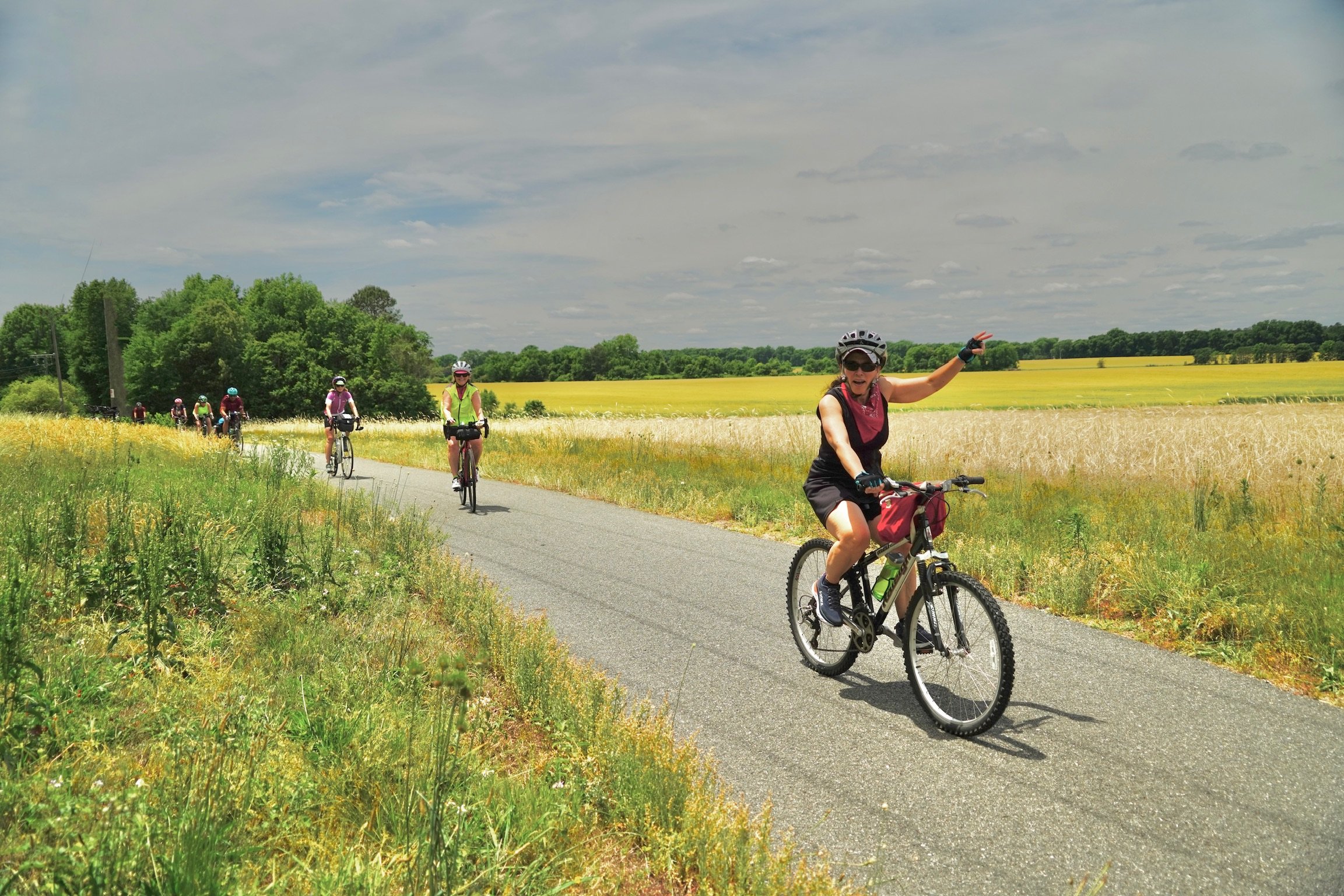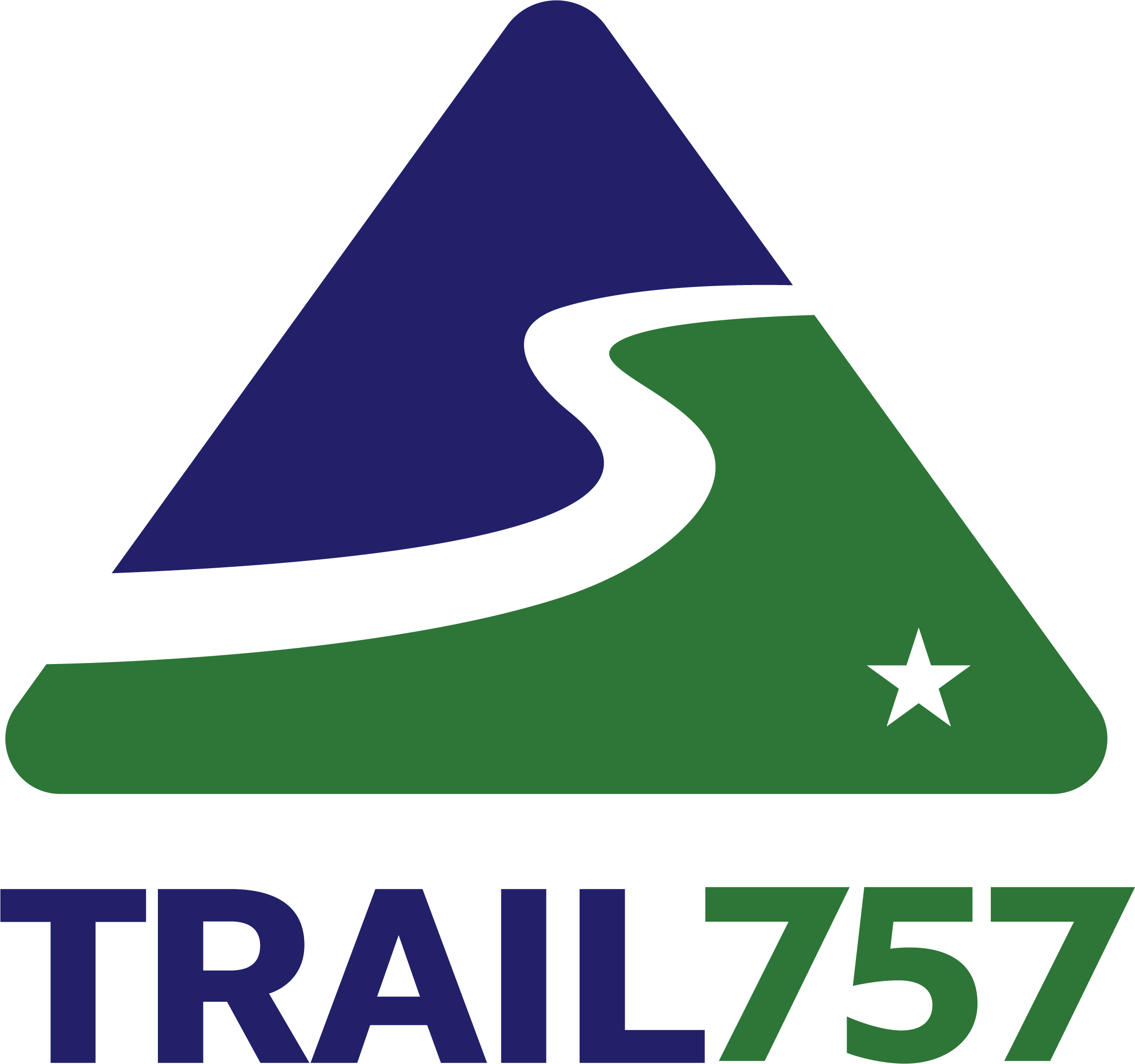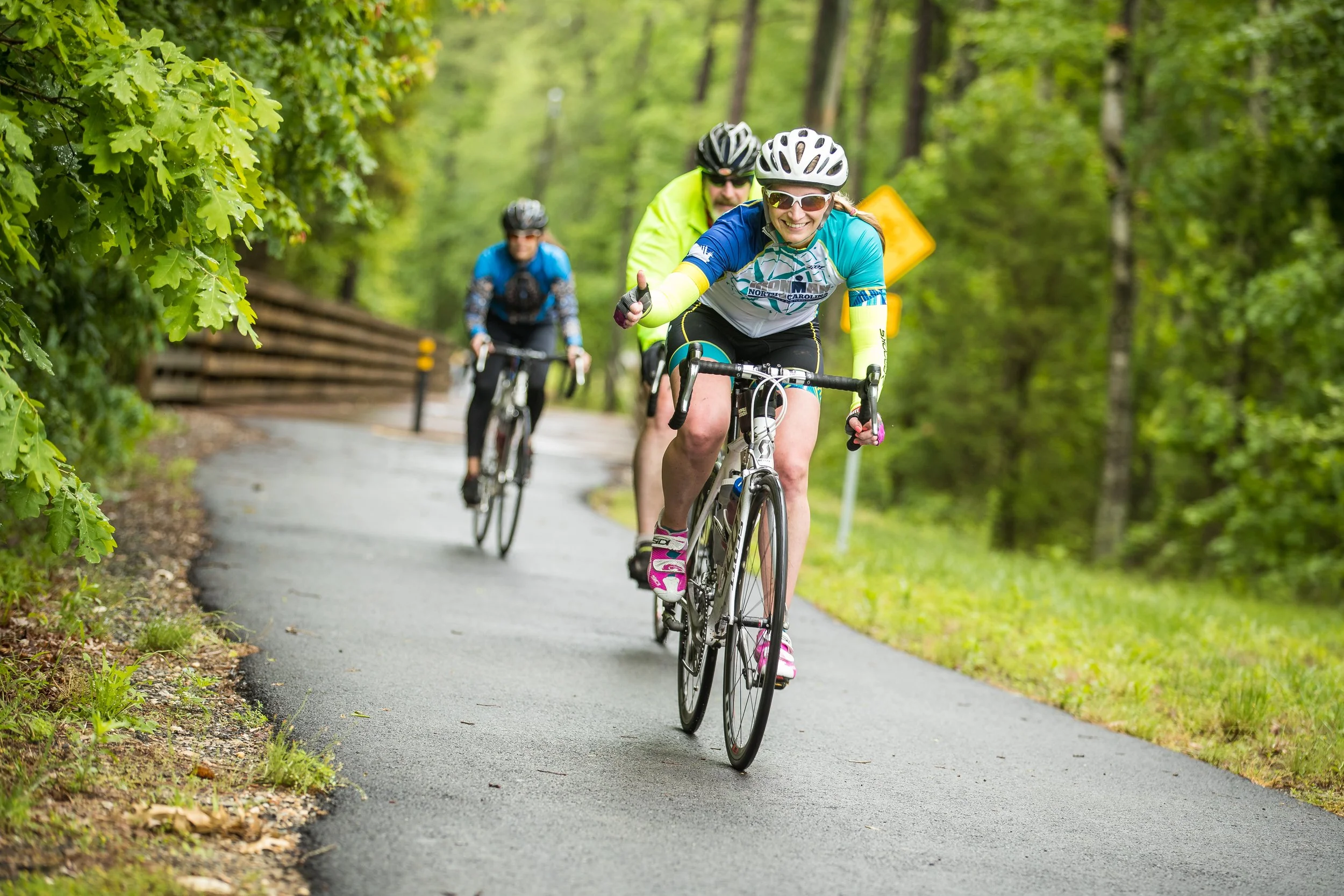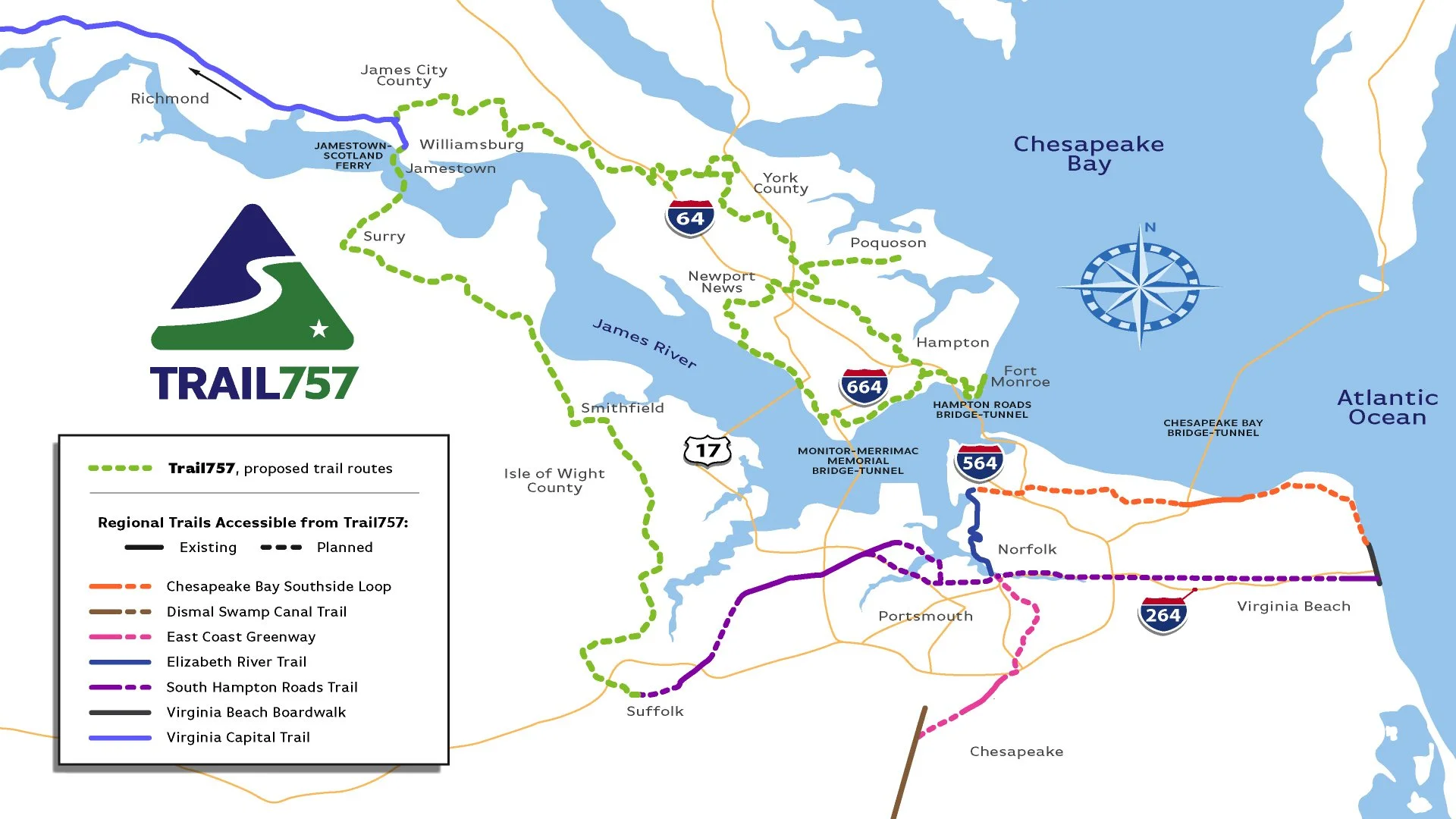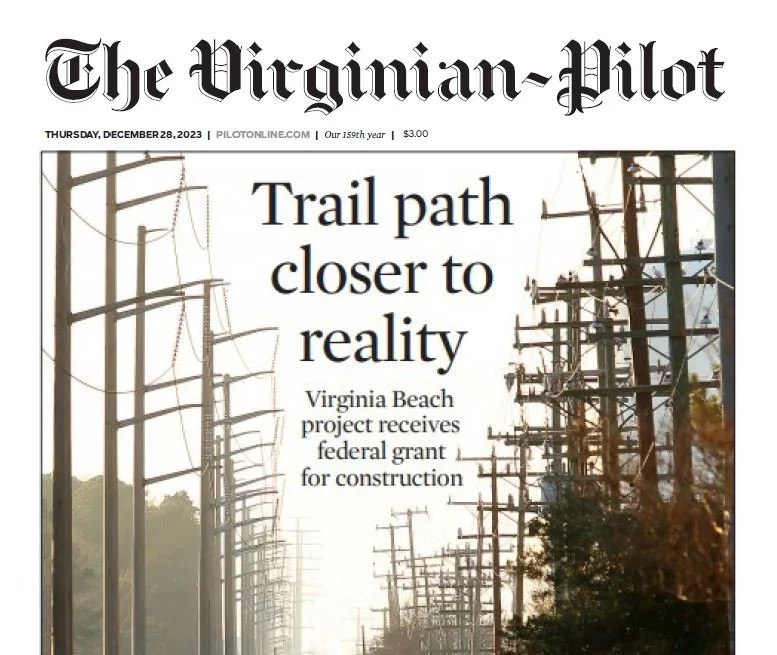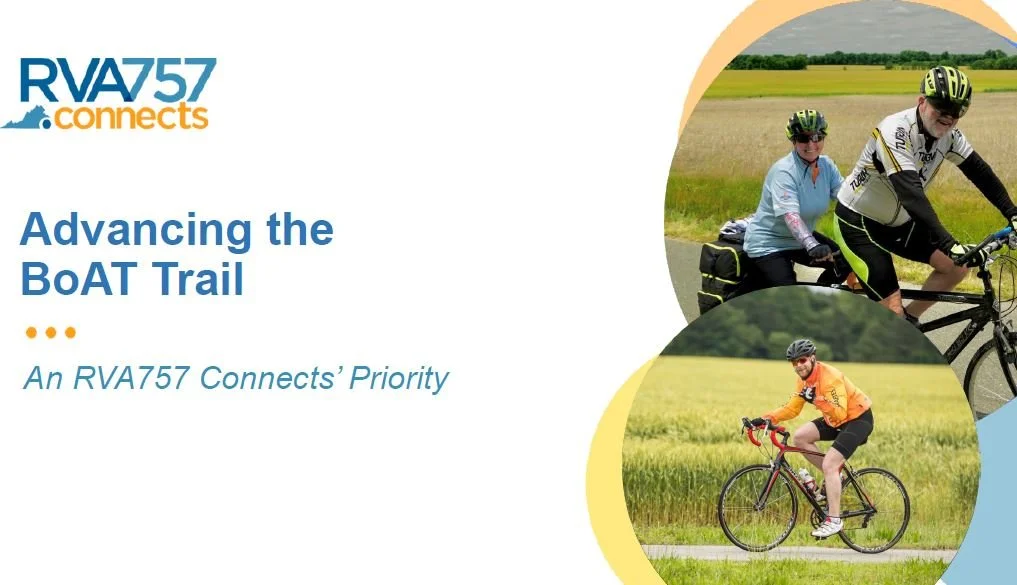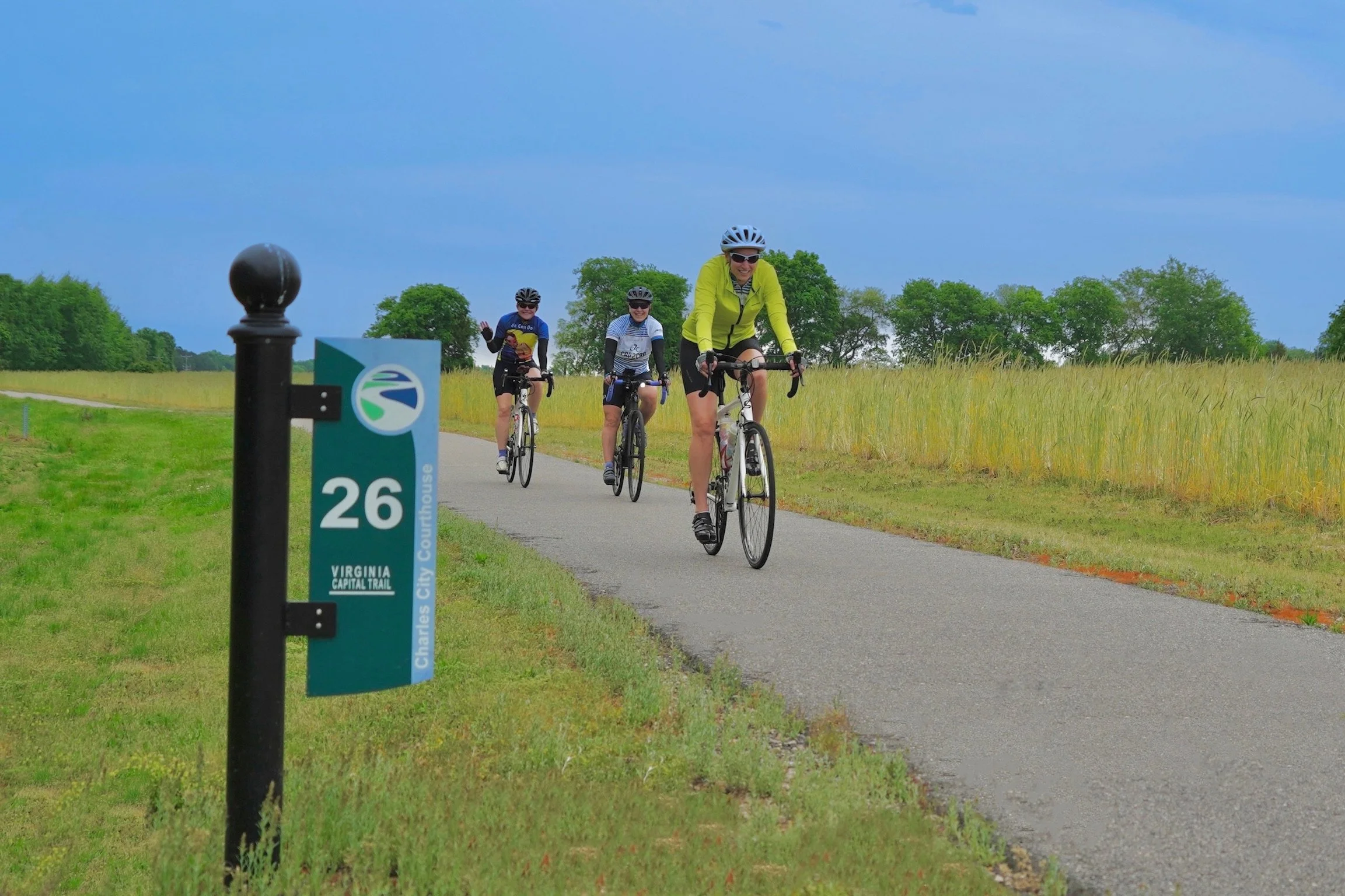
Advancing multi-use trails is a priority
One of RVA757 Connects’ Board-approved priority focus areas is accelerating multi-use trails in the I-64 Innovation Corridor megaregion - Trail757 and the Fall Line Trail.
TRAIL757, formerly called the Birthplace of America Trail (BoAT), will extend the Virginia Capital Trail that now runs from Richmond to Jamestown along Route 5 to Jamestown. The planned trail will run from
the end of the Virginia Capital Trail at Jamestown to Williamsburg and down the Peninsula to
Fort Monroe, as well as to cross the Jamestown-Scotland Ferry to Surry, Smithfield, and Suffolk,
where it will join with other current and planned trails to the Virginia Beach oceanfront. The trail
would create another important physical transportation connection between the RVA and
757 regions.
The Fall Line Trail would run through seven localities in the Richmond region
(Ashland, Hanover, Henrico, Richmond, Chesterfield, Colonial Heights, and Petersburg).
Multi-use Trails Stand Out
Bicycling in America – as well as in Virginia – has become a popular leisure activity that has seen increasing interest and use during the last five years. The COVID pandemic has accelerated this trend.
Biking is not only a popular sport, but cycling has become a great alternative mode of transportation. That interest has boosted the use and the number of bike trail networks. Localities have been investing in bike-walk trails in recent years to support the increase in demand.
And for good reason. Bike trails help attract and retain young professionals. Biking and walking activities have universal appeal. Multi-use trail access can directly improve local social equity. Trails increase access and mobility for local communities, provide healthcare savings, and enhances employer and employee attraction. For all these reasons and more, trails deliver a positive return-on-investment.
Multi-use trails are expected to continue to grow in the post-COVID era, including across Virginia.
Three multi-use trails are under some level of development in the I-64 Innovation Corridor megaregion:
-
Trail757, formerly known as the Birthplace of America Trail (B0AT), is planned as a long-distance multi-use trail that will serve both the Peninsula and the Southside in the 757 region.
There will be two segments to Trail757, both of which connect to the Virginia Capital Trail's eastern terminus at Jamestown:
• One route will run through James City County and Williamsburg, York County, Newport News, and Hampton to its terminus at Fort Monroe.
• Another route will cross the James River at the Jamestown-Scotland Ferry to Surry, Smithfield and Suffolk, where it will join with other existing and planned trails to the Virginia Beach oceanfront.
-
The Fall Line Trail will run through seven localities in the Richmond region (Ashland, Hanover, Henrico, Richmond, Chesterfield, Colonial Heights, and Petersburg).
-
The future Virginia Eastern Shore Trail will be a 49-mile walking and biking trail along the historic Eastern Shore railroad corridor between Cape Charles and Hallwood.
Learn more:
TRAIL757 Plans
Click on map to enlarge
-
Hampton Roads Transportation Planning Organization (HRTPO) is at the center of planning efforts. HRTPO has conducted a high-level planning study and identified two potential routes for Trail757 :
• One route will run from Jamestown through James City County and Williamsburg, York County, Newport News, and Hampton to its terminus at Fort Monroe.
• Another route will cross the James River at the Jamestown-Scotland Ferry to Surry, Smithfield and Suffolk, where it will join with other existing and planned trails to the Virginia Beach oceanfront.
-
Hampton Roads’ 17 local governments have unanimously supported the BoAT Trail in the region.
Chief administrative officers from James City County, Williamsburg, York County, Newport News, Hampton, and Poquoson all have committed to advancing the trail network in their localities. Some have committed local funds to support the BoAT Trail completion.
-
The initial buildout focus is on the Peninsula – the Williamsburg to Fort Monroe segment. Some small sub-segments of this Peninsula part of the BoAT Trail are in place and are being used, such as along a stretch of Monticello Avenue in James City County, part of McReynolds Athletic Complex in York County, and along part of Chesapeake Boulevard in Newport News.
But this represents a small part of the total.
Most of the BoAT on the Peninsula must be designed, funded, and constructed. The estimate to complete the entire BoAT Trail network on the Peninsula is about $125 million.
Securing all of the needed $125 million in funding for Peninsula BoAT segment is key. Several potential sources of funding include:
• Smart Scale, working with Commonwealth Transportation Board;
• Tapping into funding from the new state trail agency / department;
• Using federal infrastructure package funds;
• Utilizing locality’s capital improvement programs;
• Coordinating with developers and related development proffers; and
• Creating a public-private partnership where local governments, state government, and businesses all contribute to the cause.
-
Trail757 buildout comes with some complexity. While most of the Virginia Capital Trail traverses through rural areas along Route 5, Trail757 in Hampton Roads will proceed through suburban and urban areas. This can create planning challenges.
However, Trail757 proximity to residential and employment areas creates a potential to serve residents, businesses, and tourists. For instance, residents could use Trail757 as a preferred mobility choice for their trips to work, school, and play, while tourists could find Traikl757 attractive in connecting popular tourist destinations. The trail also would provide access to underserved populations across the Peninsula.
Plans are now underway to build TRAIL757 as an unofficial extension of the Virginia Capital Trail. The Hamton Roads regional trail system will total 190 miles when completed, connecting residential communities, tourism attractions, historical sites, educational institutions, and recreational facilities.
Click on the image to read the artictle.
Success of the Virginia Capital Trail
The 51.7-mile Virginia Capital Trail opened in 2015.
The fully-paved trail runs through four jurisdictions (City of Richmond, Henrico County, Charles City County, and James City County) with dozens of attractions along the way. It took 15 years to go from an idea to opening.
The trail has been a huge success since its opening in 2015, according to the Virginia Capital Trail Foundation’s impact reports. The trail attracts more than 1.2 million users annually. About $8.5 million in economic activity was generated within 50-miles of the trail in the 2018-19 fiscal year. During the same time period, the trail supported 100-plus full-time equivalent, or FTE, jobs in the state, and generated $613,000 in state and local tax revenues.
Read details of RVA757 Connects’ plan to advance TRAIL757 (formerly the BoAT Trail):
The PowerPoint presentation provides findings, approaches, and goals for advancing TRAIL757 (fomerly Birthplace of America (BoAT) Trail.
